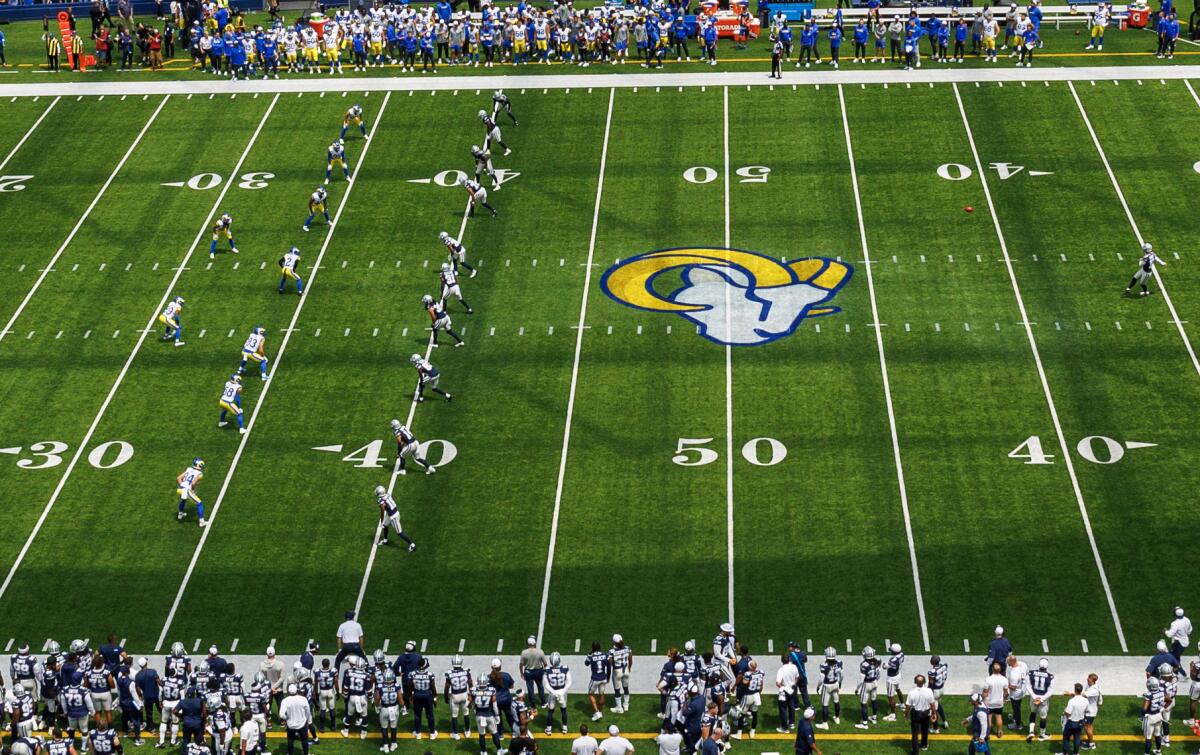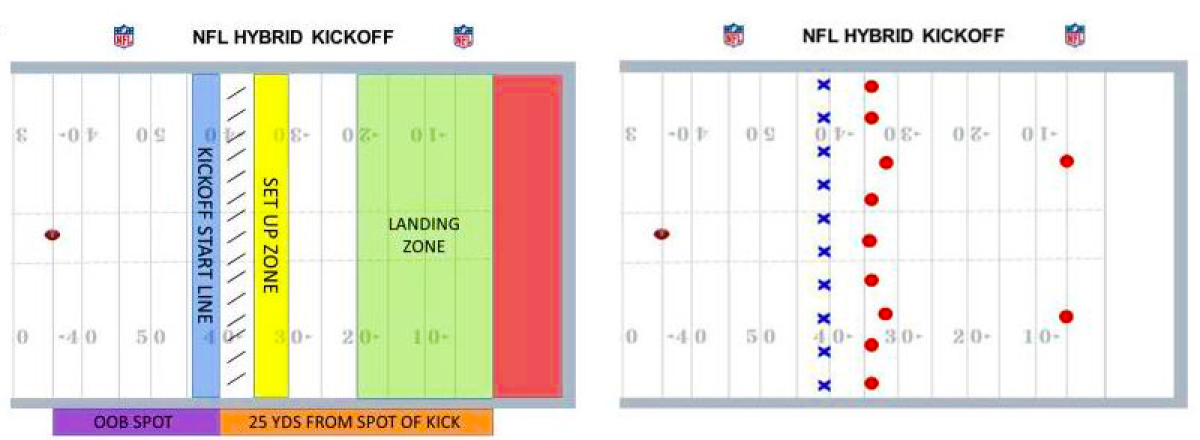Officially the new NFL kickoff, tackling, replay rules will task adjusting referees

- Share via
The NFL is making changes this season from start to finish, from so-called dynamic kickoffs to the way some defenders finish tackles.
Even casual observers will notice the difference in kickoffs, a one-year change aimed at making the play safer and more relevant. The new rules put the majority of opposing players much closer together for kickoffs, limiting those violent, full-speed collisions.
The league is also cracking down on “hip-drop” tackles in which ball carriers are wrangled down from behind by a tackler who unweights — fully lifts his body off the ground — to generate the required pull-down force.
That doesn’t mean officials will always be able to spot those tackles in games, but the league will be on the lookout to fine offenders in the aftermath.
“There’s going to be a lot of these that might end up occurring where there might not be a flag on the field because it’s so hard for the officials to see it,” said Walt Anderson, longtime referee turned NFL officiating rules analyst. “But you have to have a rule on the books to at least be able to deal with it during the week in the discipline process. That’s how most of them will be dealt with.”
Who can win the Super Bowl in New Orleans? Los Angeles Times NFL columnist Sam Farmer analyzes seven teams that can hoist the Lombardi Trophy this season.
There are four elements to a hip-drop tackle: the wrapping with the hands or arms, the swiveling across the back of the ball carrier’s body, the unweighting in which the defender lifts himself off the ground, and the dropping onto the knee or below in a way that endangers the offensive player’s lower leg, ankle or foot.
“We’ve looked [at] a lot of plays in the preseason,” Anderson said. “There have been a lot of tackles that had some of the elements of the hip-drop tackle, but we only found two tackles in the preseason that met the requirements for a hip-drop tackle.”
The preseason gave NFL fans a chance to look at the new kickoffs. On those, the ball is kicked from the 35-yard line with 10 kick coverage players assembled on the opposing 40, five on each side of the field.
Those players are within point-blank range of the “set up zone” between the 30- and 35-yard lines, the area where at least nine of the return-team blockers are required to assemble. So, almost everyone on the field is gathered in a tight cluster. No one in that area is allowed to move until the kicked ball either hits the ground or is touched by a returner inside the 20.

“The challenges that it presented for us was just getting used to mechanically officiating it from different positions on the field because the setup zones were aligned very differently from what the traditional kickoff was,” Anderson said.
“The officials, every week it seemed to get a little more comfortable for them.”
Less dramatic but still impactful are the changes to replay challenges. A coach no longer has to win both challenges to be awarded a third challenge. The new rules say going 1-1 on those challenges is sufficient to earn a third.
The NFL experimented this preseason with a more efficient way to determine if a first down was gained after the ball is spotted by hand. The league set up camera systems in four stadiums to use Hawk-Eye tracking services for line-to-gain measurements.
Players, coaches, officials and millions of fans are going to need to keep studying in attempt to comprehend the impacts of the NFL’s new kickoff rule.
That could shave as much as a minute off those ultra-close calls, and the Hawk-Eye — the same system used to determine in tennis whether the ball was in or out — is accurate down to the fraction of an inch. The NFL would keep the chain crew as a backup.
“The goal is, everybody’s on board with at some point we’ll end up implementing this during the regular season, maybe as soon as 2025,” Anderson said.
The system isn’t quite perfect yet.
“We were happy when the process went well,” he said. “Then we had a few instances which always happens whenever you’re testing things, well we need to work on refining these elements. Maybe it was a situation where the ball wasn’t as quickly visible to be able to mark it. There was maybe a little more of a delay than we want to work at having.”
More to Read
Go beyond the scoreboard
Get the latest on L.A.'s teams in the daily Sports Report newsletter.
You may occasionally receive promotional content from the Los Angeles Times.













